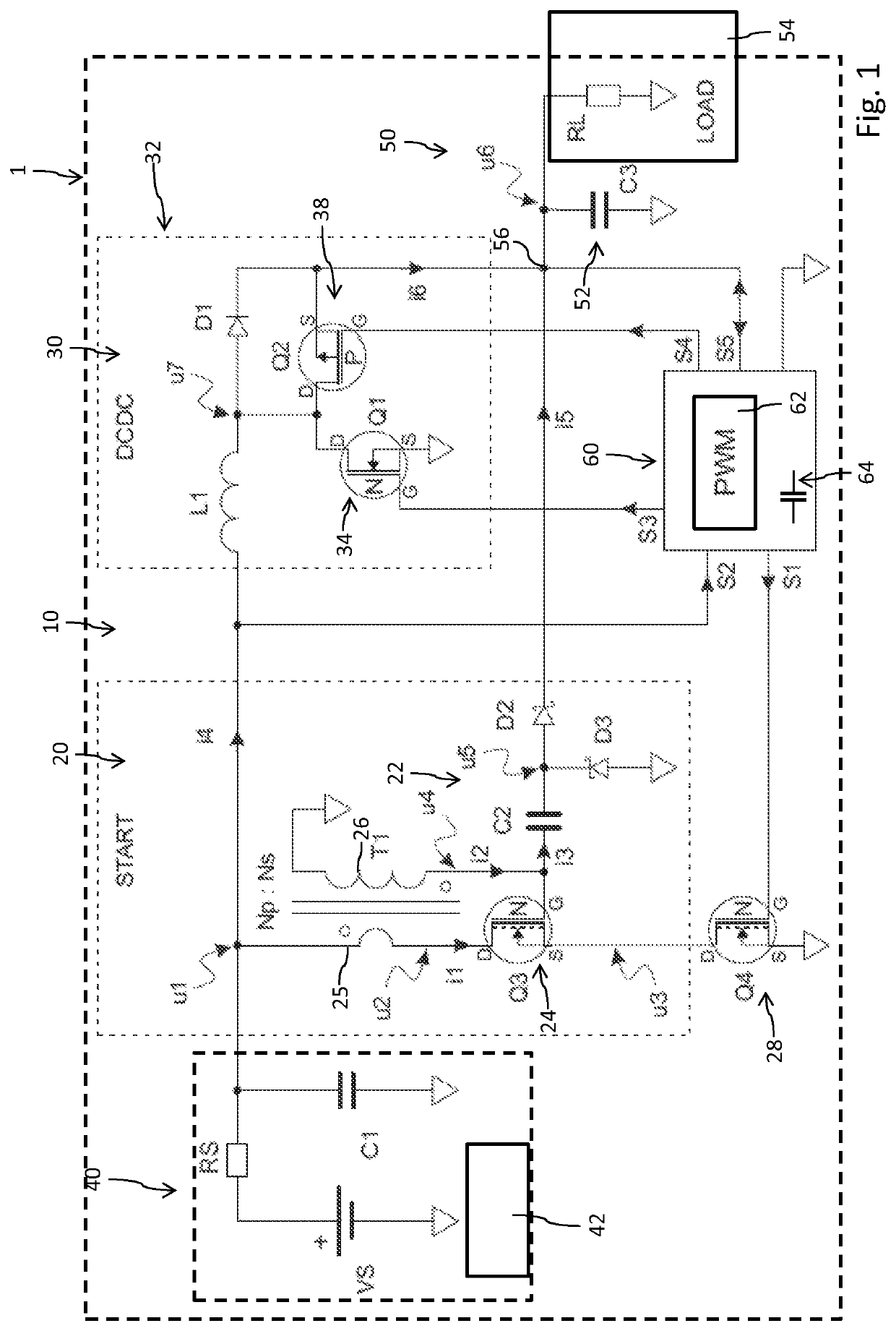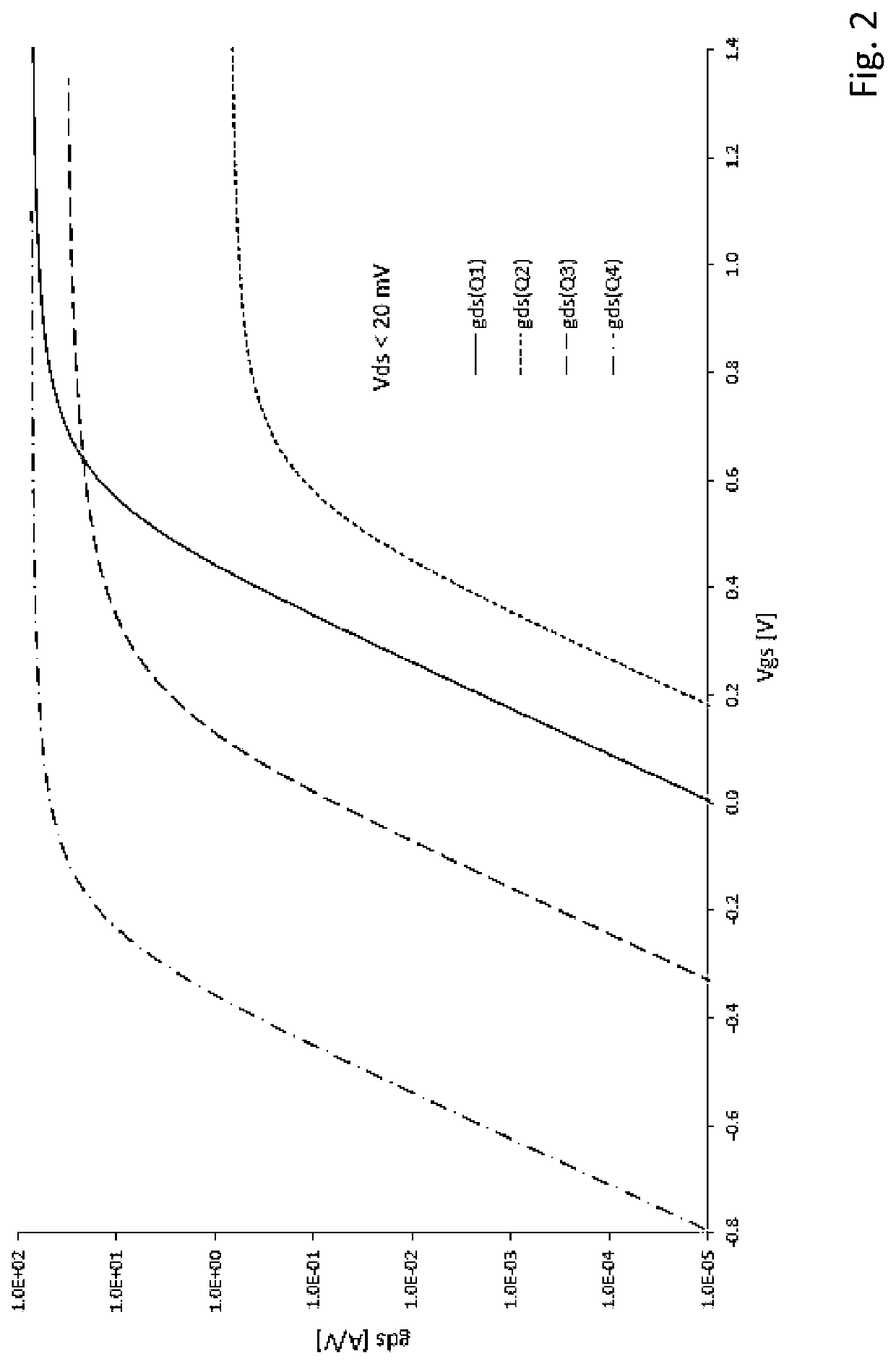Thermoelectric generator with starting circuit
a technology of starting circuit and generator, which is applied in the direction of electric variable regulation, process and machine control, instruments, etc., can solve the problems that the dc to dc voltage converter available on the market cannot work with a high efficiency with ultra-low voltage inputs, and achieve the effect of avoiding the use of pn junctions or high electron mobility field effect transistors, effective modulation of the conductivity of depletion transistors, and poor electrical performan
- Summary
- Abstract
- Description
- Claims
- Application Information
AI Technical Summary
Benefits of technology
Problems solved by technology
Method used
Image
Examples
Embodiment Construction
[0041]In FIG. 1 a schematic illustration of an embodiment of the thermoelectric generator 10 is provided. The thermoelectric generator 10 comprises a voltage source 40 and a starting circuit 20 that is connected to the voltage source 40. The thermoelectric generator 10 further comprises a DC to DC converter circuit 30 that is also connected to the voltage source 40. There is further provided an output 50 connected to a load 54 or connectable to a load 54. The output 50 is connected to the DC to DC converter 30 as well as to the starting circuit 20. In other words, there is provided an output node 56 that is connected to both, the starting circuit 20 as well as to the DC to DC converter circuit 30.
[0042]The thermoelectric generator 10 further comprises a controller 60 connected to the starting circuit 20 and connected to the DC to DC converter circuit 30. The controller 60 is connected to the starting circuit 20 via the connection S1. The controller 60 is further connected to the vol...
PUM
| Property | Measurement | Unit |
|---|---|---|
| temperature | aaaaa | aaaaa |
| voltage | aaaaa | aaaaa |
| input voltage | aaaaa | aaaaa |
Abstract
Description
Claims
Application Information
 Login to View More
Login to View More - R&D
- Intellectual Property
- Life Sciences
- Materials
- Tech Scout
- Unparalleled Data Quality
- Higher Quality Content
- 60% Fewer Hallucinations
Browse by: Latest US Patents, China's latest patents, Technical Efficacy Thesaurus, Application Domain, Technology Topic, Popular Technical Reports.
© 2025 PatSnap. All rights reserved.Legal|Privacy policy|Modern Slavery Act Transparency Statement|Sitemap|About US| Contact US: help@patsnap.com


